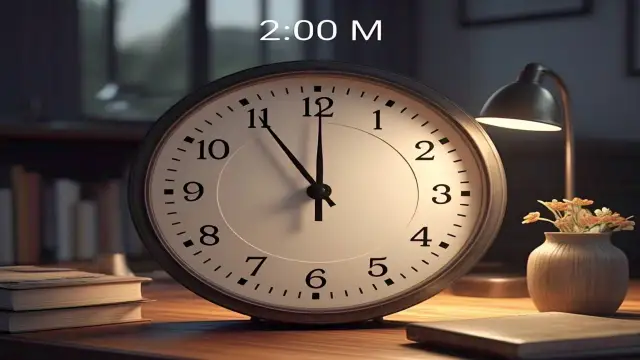Spring Forward: What You Need to Know About Daylight Saving Time
After a long winter of short days and early sunsets, it’s finally time to spring forward. This Sunday, clocks across the U.S. will jump from 1:59 a.m. to 3 a.m., marking the start of daylight saving time. But why do we do this? And what does it mean for you? Let’s break it all down—because, let’s be honest, who doesn’t have questions about this twice-a-year ritual?
What Is Daylight Saving Time?
Daylight saving time (DST) is the practice of moving clocks forward by one hour during the spring and summer months to make better use of natural daylight. The idea is simple: by shifting an hour of daylight from the morning to the evening, we can enjoy longer, brighter evenings.
When Does It Start and End?
This year, daylight saving time begins on Sunday, March 10, and lasts until Sunday, November 3. That means we’ll “lose” an hour of sleep this weekend but gain more sunlight in the evenings. Come fall, we’ll “fall back” and return to standard time, reclaiming that lost hour.
Why Do We Change the Clocks?
The concept of daylight saving time dates back to 1918, when the U.S. passed the Standard Time Act. The goal? To conserve energy and make better use of daylight during World War I. But it wasn’t always smooth sailing.
A Brief History:
- 1919: DST was repealed, leaving time changes up to local governments.
- 1942-1945: DST was reinstated during World War II to save energy.
- 1966: The Uniform Time Act standardized DST but allowed states to opt out.
- 2007: The current schedule—second Sunday in March to the first Sunday in November—was established.
Fun fact: Not everyone was on board with DST initially. Farmers, for example, argued it disrupted their schedules. Even today, opinions are divided.
Who Doesn’t Observe Daylight Saving Time?
Not every state follows the clock-changing tradition. Hawaii and most of Arizona skip DST altogether. Why? These states already enjoy plenty of sunshine year-round, so there’s no need to adjust the clocks.
What About Other Territories?
- Puerto Rico, Guam, and the U.S. Virgin Islands also stick to standard time.
- Some Native American territories in Arizona do observe DST, adding a quirky twist to the time zone map.
The Pros and Cons of Daylight Saving Time
Like most things in life, DST has its fans and critics. Let’s weigh the good and the bad.
The Pros:
- More Evening Light: Longer days mean more time for outdoor activities after work or school.
- Energy Savings: While debated, some studies suggest DST reduces electricity usage.
- Economic Boost: Extended daylight can benefit businesses like restaurants and retail stores.
The Cons:
- Sleep Disruption: Losing an hour of sleep can mess with your body clock.
- Health Risks: Studies link the time change to increased heart attacks and accidents.
- Confusion: Not all states or countries follow DST, leading to scheduling headaches.
Is Daylight Saving Time Here to Stay?
In recent years, there’s been growing momentum to make daylight saving time permanent. Enter the Sunshine Protection Act, a bill that would eliminate the need to change clocks twice a year.
What’s the Status?
- March 2022: The U.S. Senate unanimously passed the bill.
- Stalled in the House: The bill hasn’t moved forward, leaving the current system in place.
Supporters argue permanent DST would reduce confusion and improve well-being. Critics worry about darker mornings, especially in winter. As President Trump once said, it’s a “50-50” issue.
Tips for Adjusting to the Time Change
Losing an hour of sleep can throw you off your game. Here’s how to make the transition smoother:
1. Go to Bed Early
Start adjusting your sleep schedule a few days before the time change. Even 15-20 minutes can help.
2. Soak Up the Sun
Exposure to natural light in the morning can help reset your internal clock.
3. Avoid Caffeine Late in the Day
Stick to your morning coffee and skip the afternoon pick-me-ups.
4. Be Patient
It can take a few days to fully adjust. Give yourself some grace.
Fun Facts About Daylight Saving Time
- Not a Global Thing: Only about 70 countries observe DST.
- Ben Franklin’s Idea: He jokingly suggested the concept in 1784 to save candles.
- Double DST: During WWII, some areas observed “war time,” moving clocks forward two hours.
Final Thoughts: Embrace the Change
Love it or hate it, daylight saving time is here—at least for now. While the lost hour of sleep might sting, the longer evenings are a welcome trade-off. Whether you’re enjoying a sunset walk or grilling dinner outside, DST gives us a little extra time to savor the season.
So, this Sunday, don’t forget to spring forward. And who knows? Maybe one day we’ll stop changing the clocks altogether. Until then, let’s make the most of those sunny evenings.
P.S. If you’re feeling groggy on Monday, you’re not alone. Coffee is your friend.

